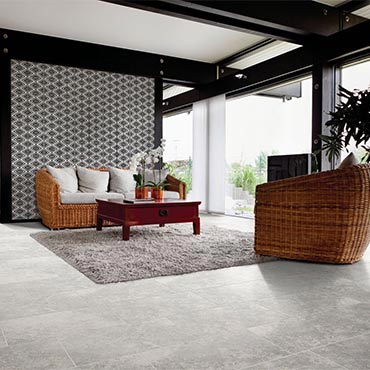Tile and grout flooring mention a variation of materials used in assembling to fill, seal, buffer, and armor the region in between the separate tiles on a floor.
Flooring grout generally has some yield and is most frequently used in hard tile installations where the natural extension and diminution of the materials due to environmental elements could cause them to crack in opposition to one another. In some cases, grout lines are generated in strong, tough, hard, and solid surface concrete floors for adorning effects.
Utilization
Where hard tile flooring is lodged the pieces are placed into the viscous backing with gaps between them, so that they will not root cracking if the materials swell or reduce against one another during summer and winter temperature. These gaps leave unprotected lines that could allow moisture and germs to pierce down past the surface covering.
Grout is used to covering the lines between tiles with a material that is tough enough to withstand most stains and yet is yielding enough to buffer the expansion and contraction of floor tile materials over time.
Familiar Flooring Materials Requiring Grout
All-natural stone tile flooring needs grout including all stones and granites. You also find grout lines used as beautifying in flooring installations.
The grout material used must put a stop to moisture from entering the surface. A grout gains this possession by staying unaffected to the entering of water. It also requires proper maintenance to remain water-proof throughout its life.
Grouts used for tile installation are cementitious grout, epoxy grout, polymer grouts, and furan grouts.
Cement Grouts for Tile Installation
The components of cement grout are:
- Portland Cement
- Water-retentive additive
- Colored pigments
- Filler particles of different sizes
Cement grouts are established grouting material. It is used both for residential and commercial tile grouting implementations. The dye shades can be added to the grout to mix and match with the tile.
The cement grouts can be Sanded, Un-sanded and Latex-Modified.
Sanded Cement Grouts
The sanded cement grout utilizes large sand particles. It is one of the top options. It is cost-efficient compared to un-sanded grouts, as sand is a cheaper pore filler compared to the chemicals used in un-sanded cement grouts. Sanded cement grout provides a tight lock. It also gives a clean and finished look to the floor.
Un-sanded Cement Tile Grout
Un-sanded cement tile grout is a mixture of Portland cement and powdered dye of colors. It does not use sand, hence also named as non-sanded grout. It is a grout used for surfaces like metal, glass, marble, and natural stone tile.
Latex-Modified Cement Grouts
The sanded grouts mixed with a latex polymer additive give latex-modified cement grout. It grows the strength and water-proofing quality of the grout.
Epoxy Grouts for Tile Installation
The components of epoxy grouts are:
- Epoxy resin
- Pigments
- Hardener
- Silica Fillers
Epoxy is examined as one of the well-built and tolerable grout materials on the market. Used in� areas of
-High-traffic areas like foyers, hallways, and entryways
-Kitchen counters
-Type of flooring exposed to harsh conditions
Polymer Tile Grout
It is a cement-based grout combined with polymers. It is one of the high-performance grouts that make certain color quality.
It is the finest choice for flooring in areas like
-Entryways
-High-traffic residences
-Kitchen counters
Furan Tile Grout
Furan tile grout is similar to polymer grout with the exception that it uses fortified materials rather than polymers.
Furan tile grout is the best� in areas like
-Industrial projects like warehouses, labs, and meat-packing plants
-Quarry tile
-Brick Pavers
-Areas exposed to chemicals and grease.

At Lone Star Floors we believe an educated consumer is our best customer.





